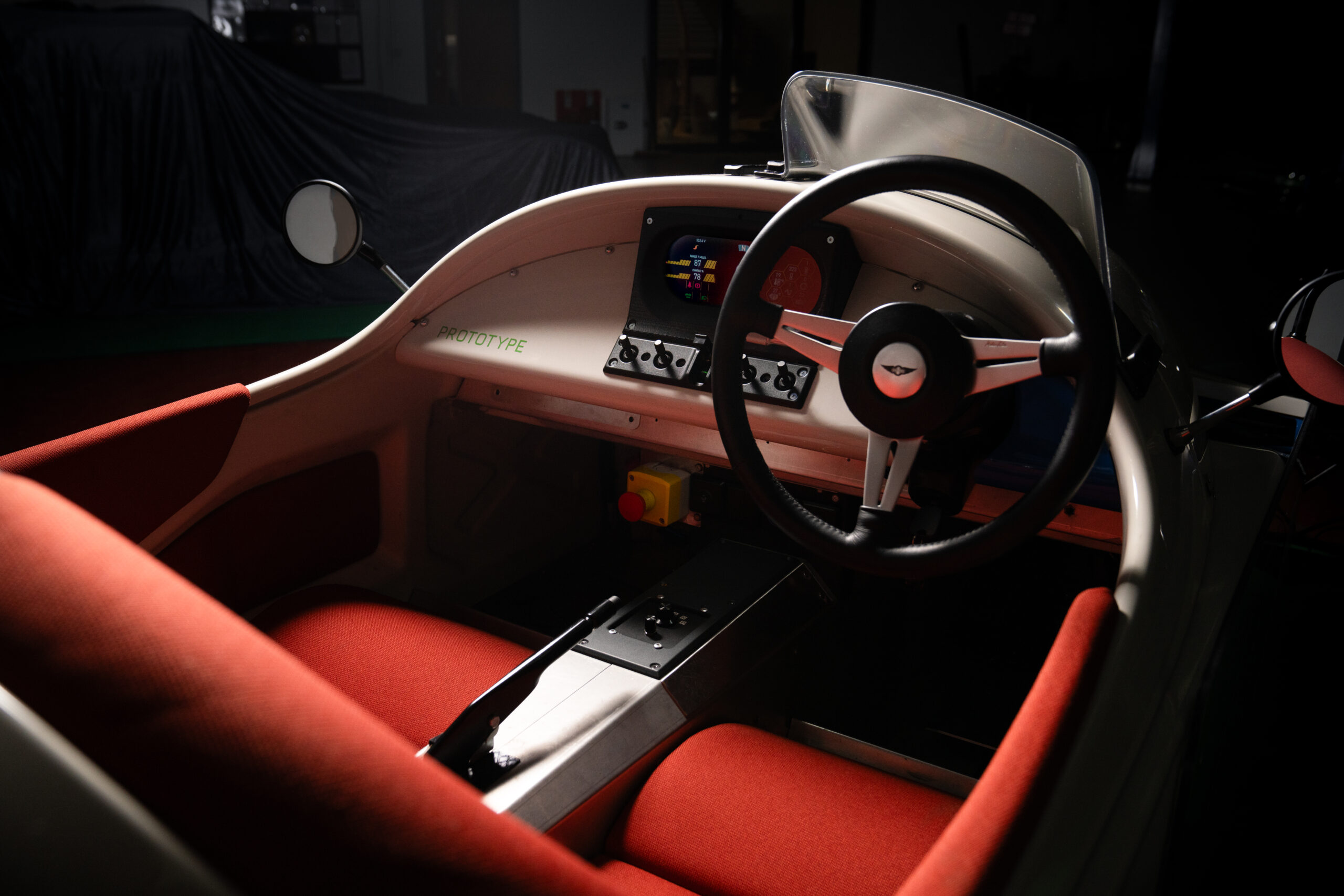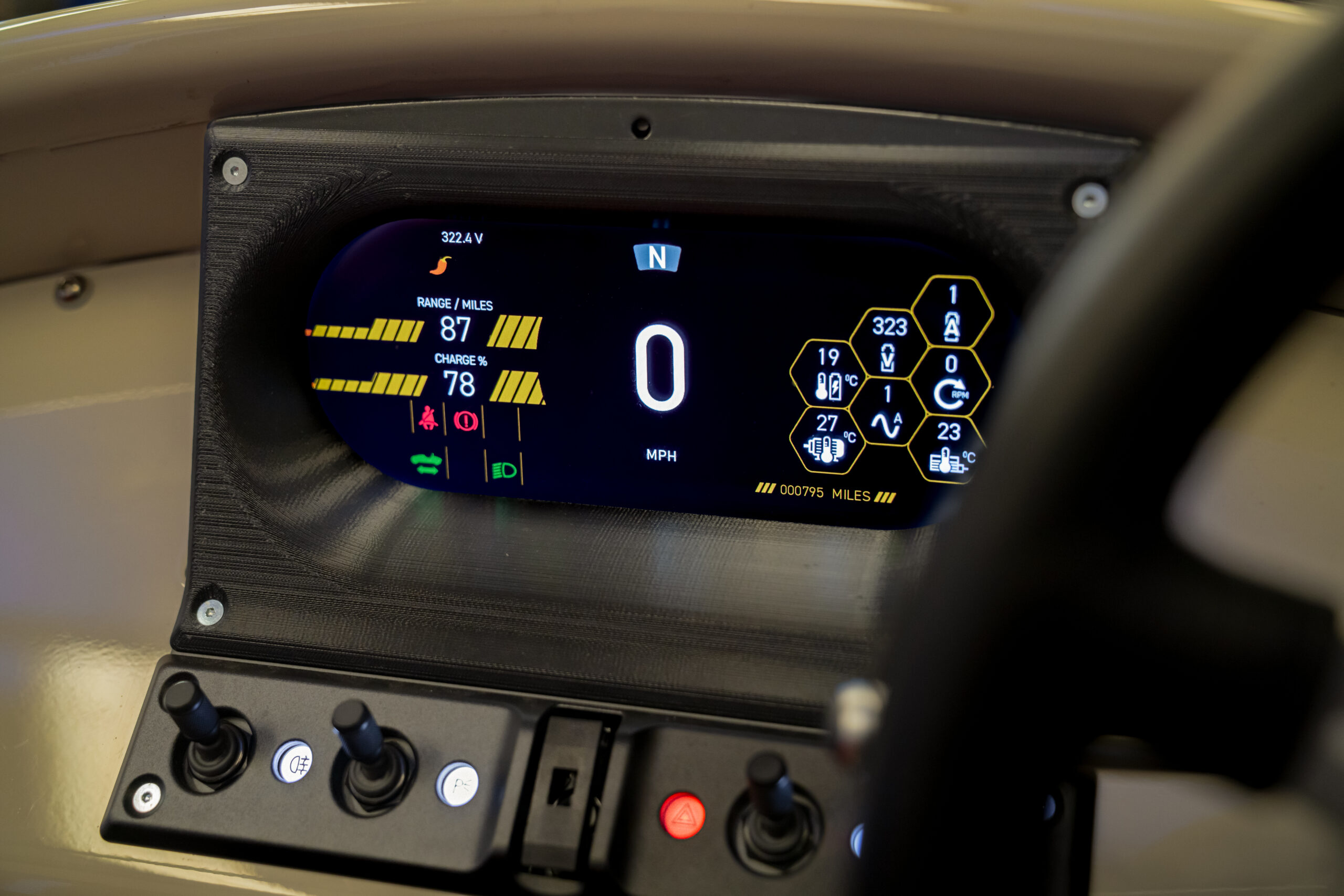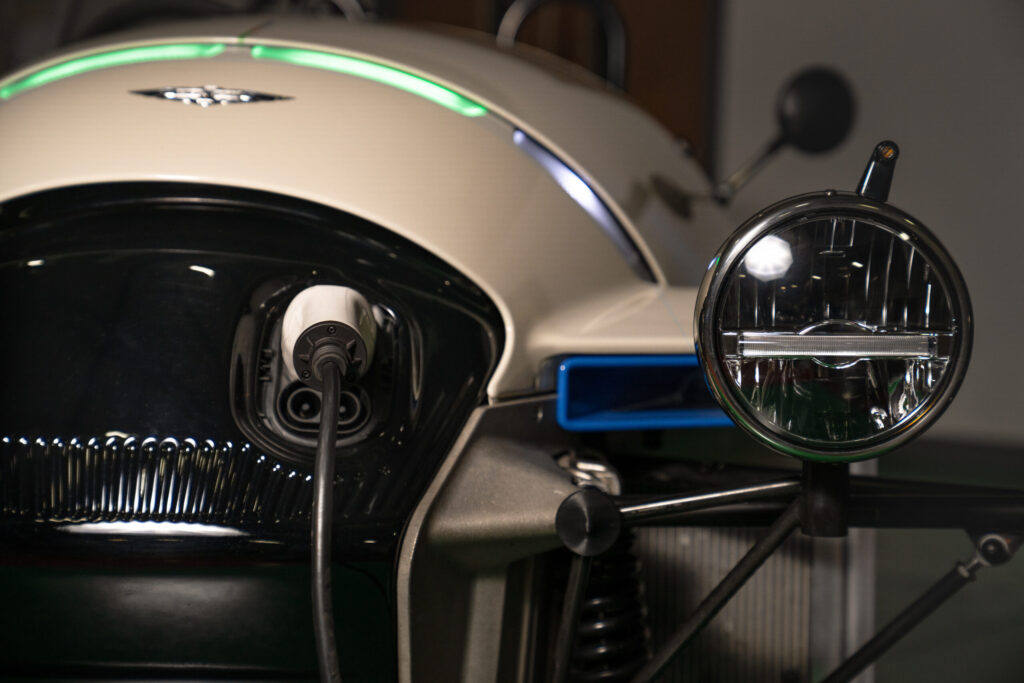To assess new solutions and ideas for its electric sports car range, Morgan Motor Company has fabricated its first experimental prototype, known as XP-1, which will be used solely to scrutinize new technology and features over the next 18-24 months. Built at Morgan’s Malvern facility in Worcestershire in the UK, XP-1 took 12 months to design and create, with the Super 3’s aluminum platform serving as a base.
The XP-1’s battery, motor and inverter combination form the first ever powertrain to be developed in-house by Morgan. Engineered specifically for XP-1, it gives complete control of calibrations that vary the throttle and regeneration level at different speeds such that the team can develop the different driving modes.
To aid with the identification of suitable component combinations for the powertrain – both for XP-1 and future Morgan electric models – the company has built a full vehicle toolchain. As Morgan explains, this will be key to modeling the compatibility and suitability of various powertrain components, calculating the range prediction algorithm and simulating different scenarios that can help the company to benchmark against future requirements.
According to Morgan, by leading the powertrain’s development in-house, it will be able to ensure its stringent weight targets are met. As such, XP-1’s weight is comparable to that of the production car it is based on.
XP-1 is Combined Charging System-enabled for fast charging and features bi-directional charging capability – two important features that will help to futureproof the company’s ongoing development activity. XP-1 is also the first ever Morgan to be fitted with an electronic park brake.  Beyond experimentation with driving characteristics and powertrain performance, XP-1 represents a learning platform for Morgan to build its understanding of EV technology and design in general, specifically aerodynamics. For example, experimental aero modifications have been implemented at the front-end, which increase range and efficiency, through a 33% reduction of drag coefficient.
Beyond experimentation with driving characteristics and powertrain performance, XP-1 represents a learning platform for Morgan to build its understanding of EV technology and design in general, specifically aerodynamics. For example, experimental aero modifications have been implemented at the front-end, which increase range and efficiency, through a 33% reduction of drag coefficient.
The specially crafted interior display, meanwhile, will be used for trialling user interface solutions. Tests will assess how users interact with the vehicle, and the best way to communicate key vehicle information, with evolutions being implemented along the way.

Other experimental features of the XP-1 prototype include external charge level indicator LEDs surrounding the front cowl and new aerodynamic wheel trims.
Alongside the engineering of its first EV, Morgan has begun the process of training its staff and adapting its infrastructure for electrification, which will primarily involve training for high-voltage systems handling, installation of charging infrastructure and preparation of the OEM’s workshops.
Matt Hole, CTO at Morgan Motor Company, said, “We are immensely proud to be sharing XP-1 with the world and showcasing some of the first-class engineering that takes place behind the scenes at Morgan. As we embark on our electric journey, this prototype will become a focal point of the engineering and design process, providing a wealth of insight and helping to build up our in-house EV capability.
“We are in no doubt that we can ensure future electric Morgan sports cars retain the core appeal of our current range, meaning they are fun to drive, lightweight, handcrafted and bespoke. We will be relentless in our pursuit of preserving these characteristics for our customers for generations to come. Because it is not tied to a product, XP-1 provides the unique ability for our audience to join us throughout this exciting learning phase, and we look forward to sharing future updates over the coming months.”


